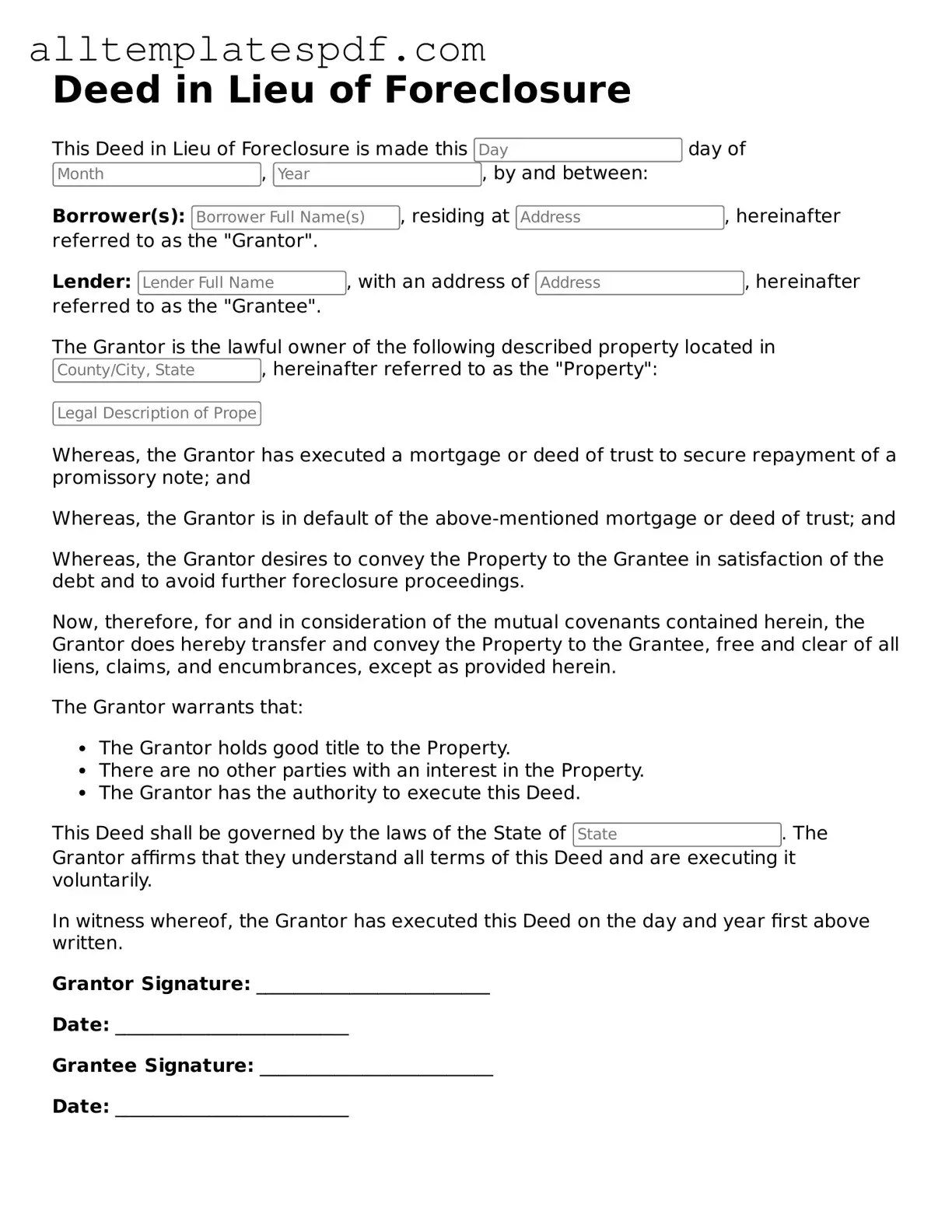Filling out a Deed in Lieu of Foreclosure form can be a complex process. Many homeowners make mistakes that can lead to delays or complications. One common error is failing to provide accurate property information. This includes the address, legal description, and parcel number. Inaccuracies can lead to confusion and may even invalidate the deed.
Another frequent mistake is neglecting to disclose all liens or encumbrances on the property. It’s crucial to list any existing mortgages, second liens, or tax liens. Omitting this information can result in legal issues down the line, as lenders may not accept the deed if they discover undisclosed claims.
Homeowners often overlook the importance of reviewing the deed’s terms. Not understanding the implications of the deed can lead to unexpected consequences. For instance, some may assume that by signing the deed, they are completely released from their mortgage obligations, which may not be the case. Always read the terms carefully.
Additionally, individuals sometimes fail to obtain the necessary signatures. A Deed in Lieu of Foreclosure typically requires the signatures of all parties involved, including co-owners. Missing a signature can render the document ineffective, prolonging the foreclosure process.
Another mistake is not seeking professional advice. Many people attempt to navigate the process without legal or financial guidance. Consulting with a real estate attorney or a financial advisor can provide clarity and help avoid pitfalls. This step is especially important for those unfamiliar with real estate law.
Lastly, people often underestimate the importance of timing. Submitting the deed too late in the foreclosure process can complicate matters. It’s essential to act promptly and communicate effectively with the lender to ensure that the deed is accepted before the foreclosure sale occurs.
